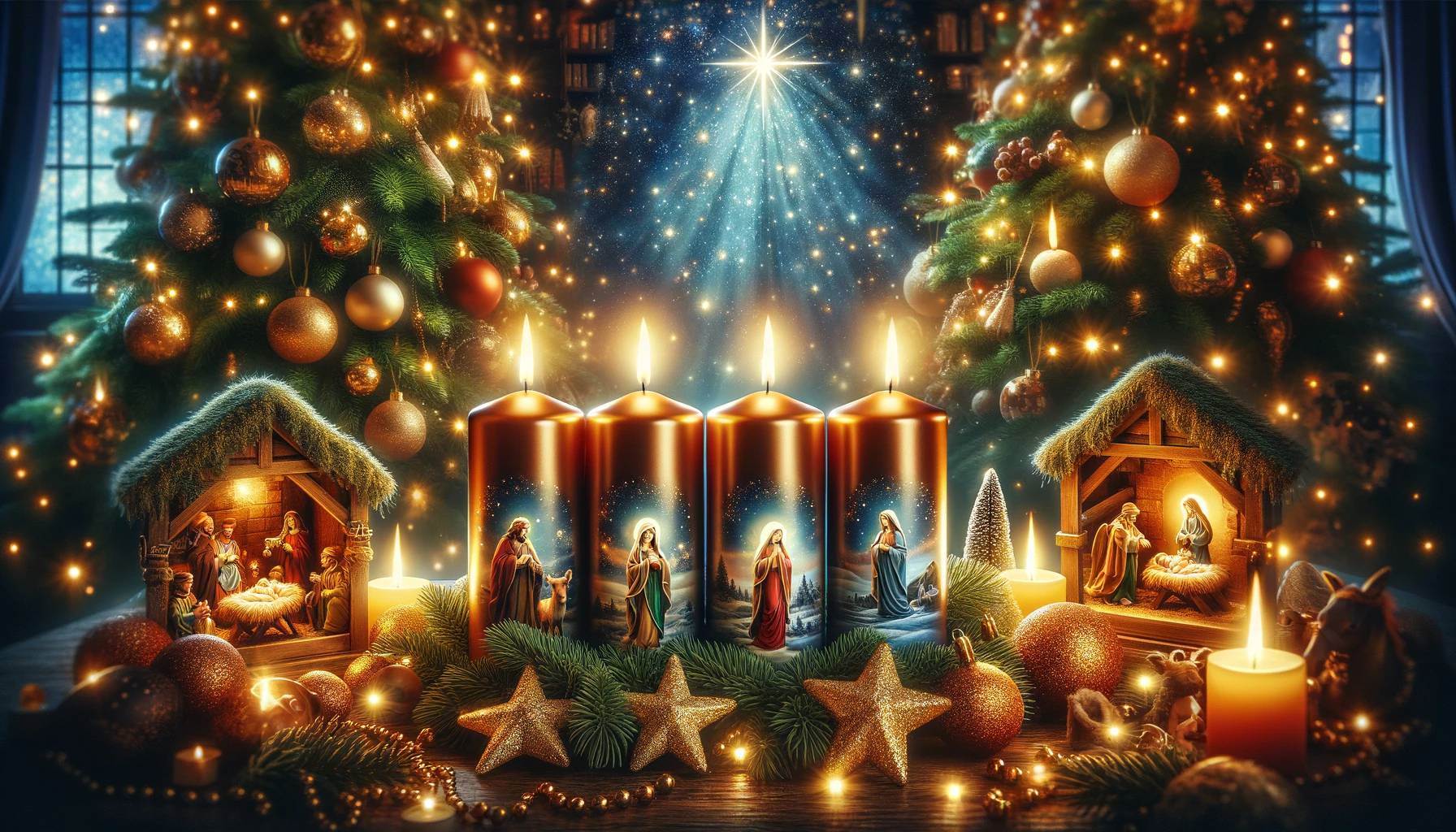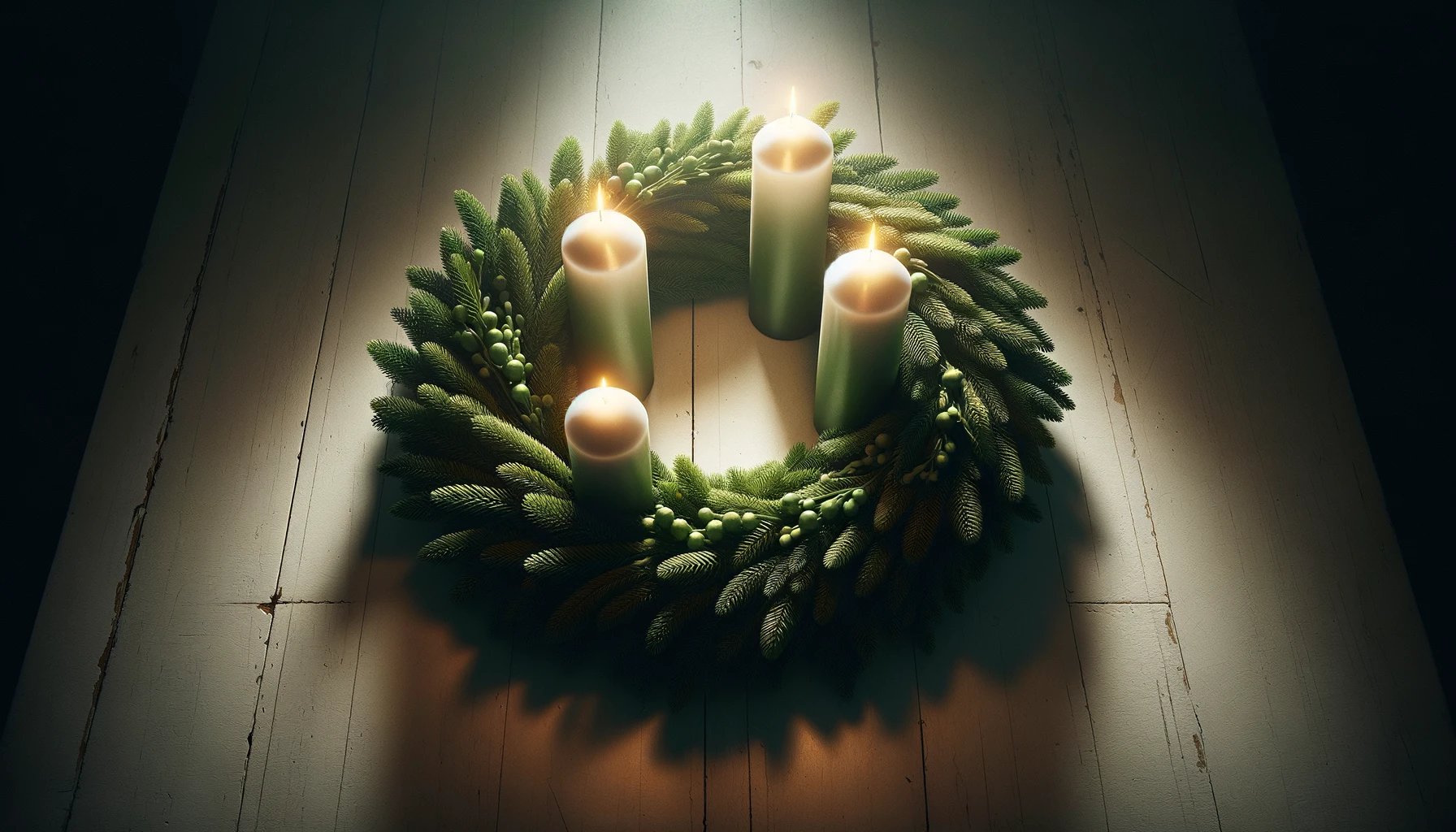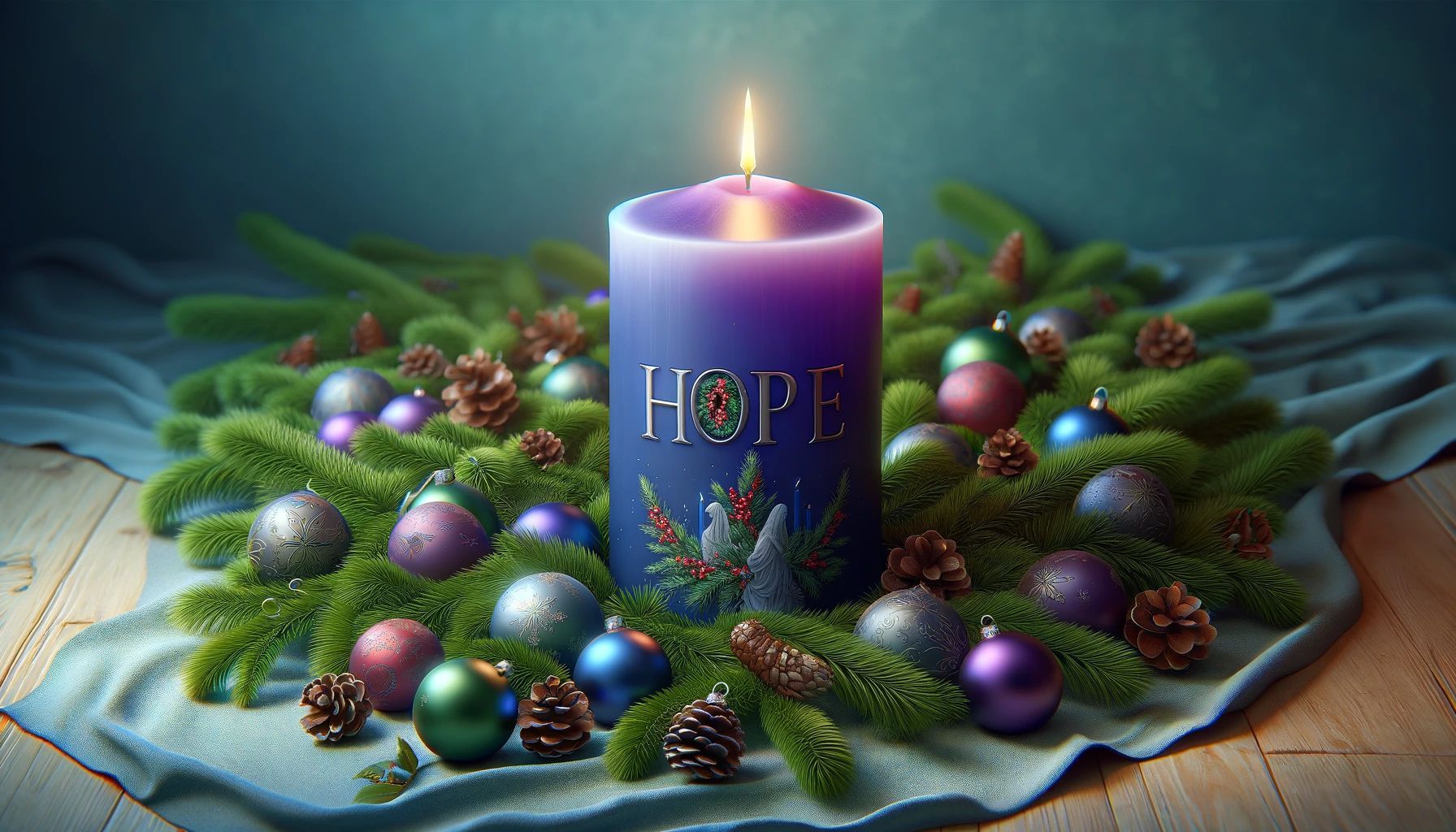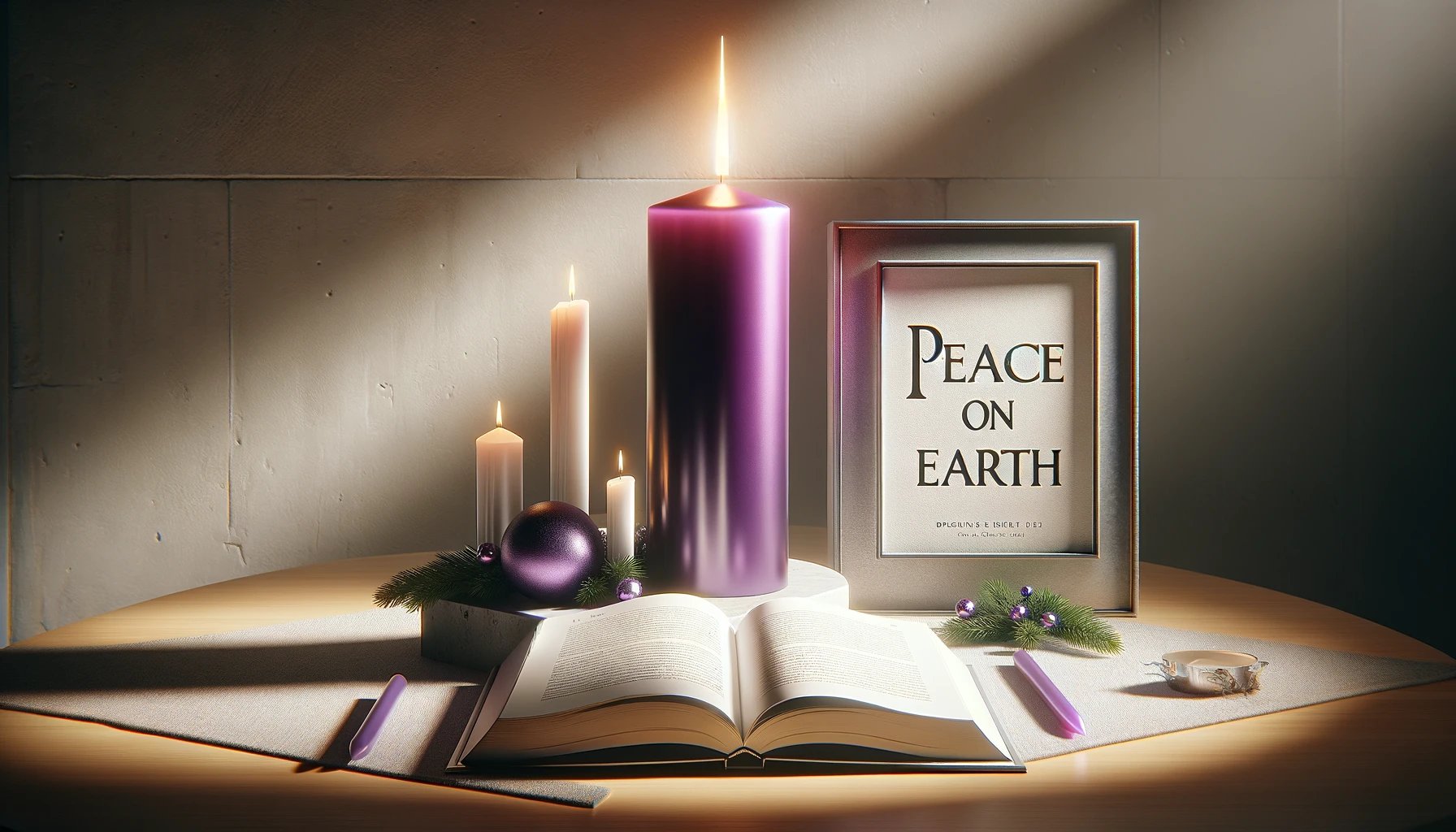Home>Special Themes>What Is The First Candle Lit In Advent


Special Themes
What Is The First Candle Lit In Advent
Published: February 13, 2024
Ericka Andersen, an editor at Christian.net, expertly merges digital strategy with content creation, focusing on faith and societal issues. Her communication skills enhance the platform's engaging narratives, fostering meaningful dialogue on belief's impact on society.
Discover the significance of the first candle lit in Advent and its special themes. Learn about the traditions and symbolism of this cherished holiday tradition.
(Many of the links in this article redirect to a specific reviewed product. Your purchase of these products through affiliate links helps to generate commission for Christian.net, at no extra cost. Learn more)
Table of Contents
Introduction
Advent, a time of anticipation and preparation, marks the beginning of the Christian liturgical year. It is a period of spiritual significance, observed by various Christian denominations, leading up to the celebration of Christmas. During this time, believers reflect on the profound themes of hope, peace, joy, and love, as they eagerly await the commemoration of the birth of Jesus Christ.
The observance of Advent is characterized by a sense of expectancy and longing, as it symbolizes the waiting for the arrival of the Messiah. This period serves as a reminder of the centuries-long yearning of the Jewish people for the promised Savior and the anticipation of His eventual coming. Advent is a time of spiritual preparation, encouraging believers to reflect on the significance of Christ's birth and to prepare their hearts to welcome Him anew.
Throughout the centuries, the observance of Advent has evolved, encompassing a rich tapestry of traditions, rituals, and symbols. One of the most cherished and visually striking customs associated with Advent is the lighting of the Advent wreath. This timeless tradition, with its profound symbolism, serves as a focal point for many Christian families and congregations during the Advent season.
As we delve into the significance of the first candle lit in Advent, it is essential to understand the historical and cultural context that has shaped this cherished tradition. The lighting of the first Advent candle holds deep spiritual meaning, representing the dawn of hope and the anticipation of the coming light. This enduring custom not only enriches the Advent season but also serves as a poignant reminder of the enduring message of faith, unity, and renewal that resonates throughout the Christian faith.
The tradition of lighting the first candle in Advent is a poignant and symbolic act that sets the stage for the profound journey of spiritual reflection and anticipation that unfolds during this sacred season. As we explore the history, tradition, and symbolism of the first Advent candle, we gain a deeper appreciation for the enduring significance of this cherished custom and its profound impact on the hearts and minds of believers around the world.
Read more: What Color Advent Candle Is Lit First
The History of Advent
The history of Advent can be traced back to the early centuries of Christianity, with its origins deeply rooted in the rich tapestry of religious observances and traditions. The word "Advent" is derived from the Latin word "adventus," meaning "coming" or "arrival." This profound term encapsulates the essence of the Advent season, signifying the anticipation of the arrival of Jesus Christ, the promised Messiah.
The earliest recorded observance of Advent dates back to the 4th and 5th centuries in Gaul (modern-day France). During this period, Christians engaged in a period of fasting and spiritual preparation leading up to the feast of Epiphany, which commemorated the manifestation of Christ to the Gentiles. Over time, the observance of Advent evolved to encompass the anticipation of both the birth of Christ and His second coming, reflecting the dual nature of hope and expectation within the Christian faith.
The structure of the Advent season as we know it today began to take shape in the medieval period. The Council of Tours in 567 A.D. formalized the observance of a 40-day period of fasting and preparation leading up to Christmas. This period mirrored the 40 days of Lent and emphasized the themes of penitence, reflection, and spiritual readiness.
The symbolic significance of Advent became further entrenched during the Middle Ages, as the Advent wreath emerged as a prominent symbol of the season. The circular shape of the wreath, representing eternity and the unending love of God, became a focal point for spiritual contemplation. The addition of candles to the wreath, each representing a different aspect of the Advent journey, added depth and visual symbolism to the observance.
In the 20th century, the observance of Advent experienced a revival, as various Christian denominations embraced and adapted its traditions to suit their worship practices. Today, the observance of Advent continues to hold deep spiritual significance for millions of believers worldwide, serving as a time of reflection, anticipation, and spiritual renewal.
The history of Advent is a testament to the enduring legacy of faith and tradition within the Christian faith. It reflects the profound journey of anticipation and preparation that has resonated through the centuries, uniting believers in a shared sense of hope and expectation as they await the celebration of the birth of Jesus Christ.
The Tradition of Lighting Candles
The tradition of lighting candles during the Advent season holds deep spiritual significance, serving as a visual and symbolic representation of the journey of anticipation and preparation. The practice of incorporating candles into the observance of Advent can be traced back to the early medieval period, where it became intertwined with the evolving customs of the season.
The Advent wreath, adorned with candles, stands as a focal point of the tradition of lighting candles. The circular shape of the wreath symbolizes the eternity of God, while the evergreen foliage represents the enduring nature of His love and the hope of eternal life. The candles, typically arranged in a circle on the wreath, embody the progressive illumination of the world through the arrival of Christ, the Light of the World.
Each candle on the Advent wreath carries its own distinct symbolism, representing the four weeks of Advent. The lighting of the candles, one for each week leading up to Christmas, serves as a visual marker of the passage of time and the gradual anticipation of the birth of Jesus Christ. The progression from the first candle to the fourth encapsulates the unfolding narrative of hope, peace, joy, and love, mirroring the thematic progression of the Advent season.
The act of lighting the candles is often accompanied by prayers, readings, and reflections, creating a sacred and contemplative atmosphere. Families and congregations gather around the Advent wreath, engaging in this timeless ritual that fosters a sense of unity and spiritual connection. The warm glow of the candles illuminates the darkness, symbolizing the dawning of hope and the promise of Christ's imminent arrival.
The tradition of lighting candles during Advent transcends denominational boundaries, resonating with Christians of various backgrounds and traditions. It serves as a tangible and evocative expression of the spiritual themes that define the Advent season, inviting believers to immerse themselves in the timeless narrative of faith, anticipation, and renewal.
As the flames of the candles flicker and dance, they serve as a poignant reminder of the enduring light of Christ, dispelling the shadows of doubt and despair. The tradition of lighting candles during Advent encapsulates the essence of the season, infusing it with a sense of reverence, contemplation, and joyful expectation.
The First Candle of Advent
The first candle of Advent, often referred to as the "Hope Candle," holds profound significance within the Advent tradition. As the initial beacon of light in the Advent wreath, it symbolizes the dawning of hope and the anticipation of the coming Messiah. This candle, typically purple or blue in color, serves as a poignant reminder of the hope that permeates the Advent season, igniting a sense of expectation and renewal in the hearts of believers.
The lighting of the first Advent candle takes place on the first Sunday of Advent, marking the beginning of the liturgical year. This sacred act sets the tone for the entire season, inviting individuals and congregations to embark on a journey of spiritual reflection and anticipation. As the flame of the Hope Candle is kindled, it illuminates the darkness, serving as a visual representation of the hope that Christ's birth brings to a world yearning for redemption.
The symbolism of the Hope Candle extends beyond its role as a mere decorative element. It embodies the prophetic anticipation of the promised Savior, echoing the words of Isaiah: "The people walking in darkness have seen a great light; on those living in the land of deep darkness a light has dawned." This profound imagery encapsulates the essence of the first Advent candle, encapsulating the transformative power of hope in dispelling the shadows of despair and uncertainty.
The color of the first Advent candle holds its own symbolic significance. In many traditions, purple is associated with penitence, preparation, and royalty, reflecting the dual themes of repentance and the anticipation of the arrival of the King of Kings. Alternatively, the use of blue conveys a sense of hope, tranquility, and the anticipation of the fulfillment of God's promises. Both interpretations underscore the profound spiritual depth of the first Advent candle and its role in shaping the collective consciousness of believers during this sacred season.
As the first candle is lit, its gentle glow serves as a beacon of hope, guiding believers through the weeks of Advent. It beckons them to embrace the transformative power of hope, inspiring them to prepare their hearts to receive the light of Christ into their lives. The ritual of lighting the Hope Candle fosters a sense of unity and anticipation, uniting individuals and communities in a shared journey of faith and expectation.
In essence, the first candle of Advent embodies the timeless message of hope that resonates throughout the Christian faith. Its illumination heralds the beginning of a spiritual pilgrimage, inviting believers to immerse themselves in the profound themes of anticipation, renewal, and the enduring promise of Emmanuel, "God with us." As the flame of the Hope Candle flickers, it kindles a sense of optimism and expectation, infusing the Advent season with a radiant and transformative spirit of hope.
Symbolism of the First Candle
The first candle of Advent, often referred to as the "Hope Candle," holds profound significance within the Advent tradition. As the initial beacon of light in the Advent wreath, it symbolizes the dawning of hope and the anticipation of the coming Messiah. This candle, typically purple or blue in color, serves as a poignant reminder of the hope that permeates the Advent season, igniting a sense of expectation and renewal in the hearts of believers.
The lighting of the first Advent candle takes place on the first Sunday of Advent, marking the beginning of the liturgical year. This sacred act sets the tone for the entire season, inviting individuals and congregations to embark on a journey of spiritual reflection and anticipation. As the flame of the Hope Candle is kindled, it illuminates the darkness, serving as a visual representation of the hope that Christ's birth brings to a world yearning for redemption.
The symbolism of the Hope Candle extends beyond its role as a mere decorative element. It embodies the prophetic anticipation of the promised Savior, echoing the words of Isaiah: "The people walking in darkness have seen a great light; on those living in the land of deep darkness a light has dawned." This profound imagery encapsulates the essence of the first Advent candle, encapsulating the transformative power of hope in dispelling the shadows of despair and uncertainty.
The color of the first Advent candle holds its own symbolic significance. In many traditions, purple is associated with penitence, preparation, and royalty, reflecting the dual themes of repentance and the anticipation of the arrival of the King of Kings. Alternatively, the use of blue conveys a sense of hope, tranquility, and the anticipation of the fulfillment of God's promises. Both interpretations underscore the profound spiritual depth of the first Advent candle and its role in shaping the collective consciousness of believers during this sacred season.
As the first candle is lit, its gentle glow serves as a beacon of hope, guiding believers through the weeks of Advent. It beckons them to embrace the transformative power of hope, inspiring them to prepare their hearts to receive the light of Christ into their lives. The ritual of lighting the Hope Candle fosters a sense of unity and anticipation, uniting individuals and communities in a shared journey of faith and expectation.
In essence, the first candle of Advent embodies the timeless message of hope that resonates throughout the Christian faith. Its illumination heralds the beginning of a spiritual pilgrimage, inviting believers to immerse themselves in the profound themes of anticipation, renewal, and the enduring promise of Emmanuel, "God with us." As the flame of the Hope Candle flickers, it kindles a sense of optimism and expectation, infusing the Advent season with a radiant and transformative spirit of hope.















